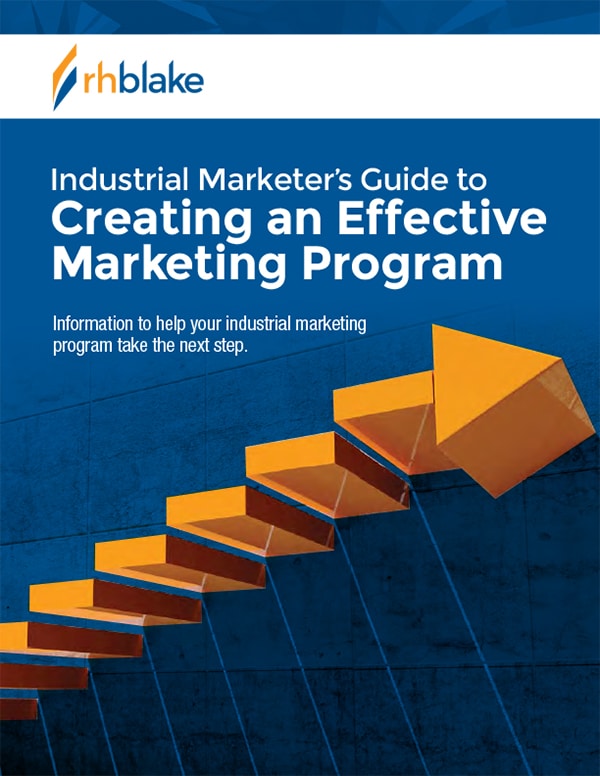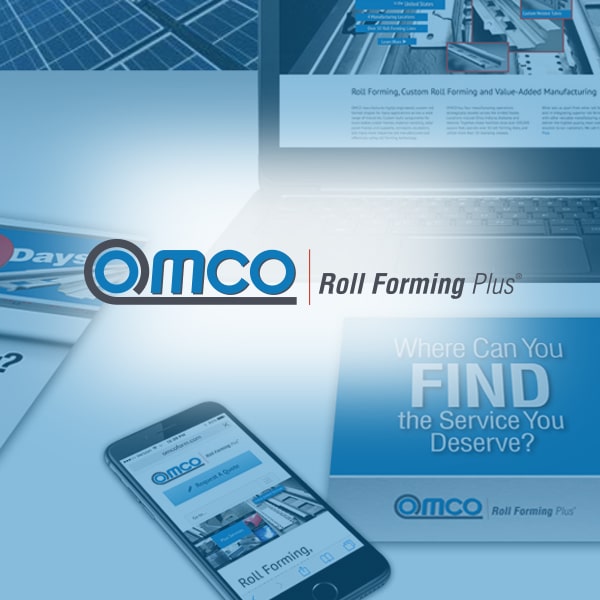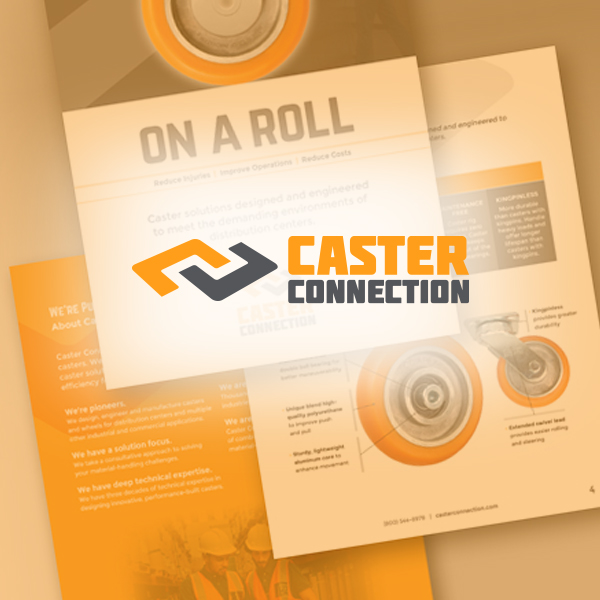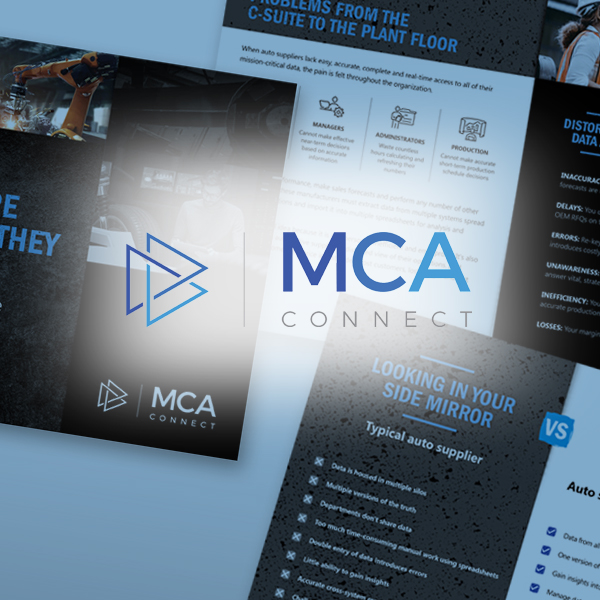Content has changed marketing for manufacturers. So that means it’s changed for your competitors, too.
How to Conduct a Content Competitive Analysis: Best Practices for Manufacturers
Content has changed marketing for manufacturers. So that means it’s changed for your competitors, too.
The journey that buyers take before making a purchase involves a great deal of content that buyers consume on their own before reaching out to a manufacturer. These days, you win or lose the battle for market share with pre-sale content.

Effective marketing content (whitepapers, case studies, articles, videos, and more) establishes credibility, builds trust and demonstrates expertise. Your challenge, of course, is that your competitors know this, too. Which means your content must establish credibility, build trust and demonstrate expertise better than your competitors’ content does.
To do this, you must first discover what your competitors are doing when it comes to content marketing. That means conducting a Content Competitive Analysis.
Content Competitive Analysis Defined
A Content Competitive Analysis, also called a Competitive Content Analysis or Competitive Content Marketing Analysis, is a comprehensive and systematic study of a competitor’s marketing content to discover their strengths and weaknesses and to compare them with yours.
Given the vital role that marketing content plays in the buying journey, you should conduct a Content Competitive Analysis to:
- Discover how your marketing messages compare with those of your competitors
- Learn how your competitors describe the challenges that their customers (your potential customers, that is) face, and that their solutions solve
- Find out the keywords and phrases that your competitors use to describe their solutions
- Discover the breadth and depth of your competitors’ marketing content
- Discover the channels that your competitors are strong in, and weak in
- And more
In your Content Competitive Analysis, you are examining your competitors to discover everything that currently gives you a competitive advantage, or that currently weakens your position in the marketplace as far as your marketing messaging is concerned. Essentially, you conduct your competitor content audit to discover:
- What you as a manufacturer are doing that you should continue doing
- What you are not doing that you should start doing
- What you are doing that you should stop doing
How to Conduct Your Content Competitive Analysis
As a manufacturer, you conduct a Competitive Content Marketing Analysis by answering four questions:
- What do our competitors say?
- Where do our competitors say it?
- How frequently do they say it?
- How well do they say it?
In other words, you aim to discover what your competitors say about marketplace challenges, buyer problems, their solutions (products and services), and so on, and where they say these things (their homepage, for example, or in their blog, or in trade publications, or through a podcast).
Your first order of business is to define your scope. You must set some parameters around your Competitive Content Analysis. Start with what you are looking for. Your audit can be broad or narrow. For example, you can analyze your competitors to discover what they are saying about sustainability, automation, and machine learning, and examine that topic across all marketing platforms. That’s a broad analysis.
Or, you can narrow your focus to just one topic and one channel. What, for example, are your competitors saying on Twitter about machine learning? That’s a narrow focus.
Naturally, the broader your scope, the longer your analysis will take, and the more it will cost.
Your next task is to decide where you are going to look. Marketing messages exist in an ecosystem that includes offline and online platforms, print and digital media platforms and assets, and a wide variety of content types. Decide where you are going to look. Draw up a master list of all possible places, then create a short list of the places where you must compete. Consider the following:
- Homepages
- Product pages
- Service pages
- About us pages
- Collateral, both electronic and print
- News releases
- Cases studies
- Blogs
- Whitepapers, trend reports and other thought-leadership assets
- Live events (trade shows)
- Virtual events (webinars)
- Videos
- Social media
- Paid advertising
- Salespeople who know how your competitors describe their offerings
- Customer service staff who know how your customers describe competing offerings
What to look for
Once you have decided on the scope of your analysis, visit each source of competitor content, and ask the following questions:
- How do they describe their market or customers? What do they call their market? What do they call their buyers?
- How do they position their buyer’s problem? What do they call it? What words and phrases do they use to articulate the challenges and pains that their customers face?
- How do they describe their key offerings? What do they call them? Are these offerings proprietary and branded? Are they turn-key solutions? Are they modular? Are they SaaS?
- How do they position their solution? Is it the first in the marketplace? Is it faster, cheaper, of higher quality, or something else?
- What features do they describe? What benefits do they name? What gets obvious prominence?
- What is their elevator pitch? How does your competitor articulate who they are, what they offer, and who they help, in a few compelling sentences?
- What is their slogan? Does the competitor have a slogan that they use year after year to position themselves in the marketplace? Have they created a campaign slogan for one of their offerings? Are these slogans coherent—and compelling?
- What positioning pillars do they use? In other words, what major claims do they make about their solutions?
- What proof points do they offer? What industry awards, installed base count, marketplace position or other facts do they offer to prove their marketing claims?
- What is the breadth of their marketing content? Do they have a lot, or a little? Are they present on a few platforms, or many?
- What is the depth of their marketing content? Is their content short and generic, or long and detailed?
- Are they thought leaders? Do they publish reports about industry trends? Do they publish whitepapers that demonstrate domain expertise and marketplace understanding? Are they quoted in reputable trade journals?
- What are their competitive differentiators? In what ways do they articulate how their company and their solutions are unique?
- What are their content marketing strengths? What do they do really well? What messages do they champion? What channels do they dominate?
- What are their content marketing weaknesses? Where are they vulnerable? What strategic messages are they communicating poorly, or infrequently, or in not enough places, or not at all?
Make Sense of Your Findings
Your Competitive Content Analysis is valuable only if it leads to actionable insights. You must document your findings in such a way that opportunities become apparent. The easiest way to get there is to create a comprehensive spreadsheet. Along the top, put the name of a competitor in each column. Down the left side, list the things you are measuring. Create as many tabs as you need to be thorough, and to keep your spreadsheets understandable.
Then, fill in the spreadsheet, indicating what your competitors are saying, where they are saying it, and so on. From this spreadsheet you quickly see where your competitors are strong, where they are weak, and how you compare. Then you are ready to brainstorm the content you must create, the topics you must address, and the channels you must focus on, to gain (or maintain) your competitive advantage.
If you need help getting started, download the RH Blake Content Competitive Analysis Template.

Request the Content Competitive Analysis Template
Content has changed marketing for manufacturers. So that means it’s changed for your competitors, too.
How to Conduct a Content Competitive Analysis: Best Practices for Manufacturers
Is there a gap between what you deliver and what your customers want? Is there a gulf between what you believe about your brand and what your potential buyers believe? Is there a chasm between your marketing assumptions and marketplace reality?

Effective marketing content (whitepapers, case studies, articles, videos, and more) establishes credibility, builds trust and demonstrates expertise. Your challenge, of course, is that your competitors know this, too. Which means your content must establish credibility, build trust and demonstrate expertise better than your competitors’ content does.
To do this, you must first discover what your competitors are doing when it comes to content marketing. That means conducting a Content Competitive Analysis.
Content Competitive Analysis Defined
A Content Competitive Analysis, also called a Competitive Content Analysis or Competitive Content Marketing Analysis, is a comprehensive and systematic study of a competitor’s marketing content to discover their strengths and weaknesses and to compare them with yours.
Given the vital role that marketing content plays in the buying journey, you should conduct a Content Competitive Analysis to:
- Discover how your marketing messages compare with those of your competitors
- Learn how your competitors describe the challenges that their customers (your potential customers, that is) face, and that their solutions solve
- Find out the keywords and phrases that your competitors use to describe their solutions
- Discover the breadth and depth of your competitors’ marketing content
- Discover the channels that your competitors are strong in, and weak in
- And more
In your Content Competitive Analysis, you are examining your competitors to discover everything that currently gives you a competitive advantage, or that currently weakens your position in the marketplace as far as your marketing messaging is concerned. Essentially, you conduct your competitor content audit to discover:
- What you as a manufacturer are doing that you should continue doing
- What you are not doing that you should start doing
- What you are doing that you should stop doing
How to Conduct Your Content Competitive Analysis
As a manufacturer, you conduct a Competitive Content Marketing Analysis by answering four questions:
- What do our competitors say?
- Where do our competitors say it?
- How frequently do they say it?
- How well do they say it?
In other words, you aim to discover what your competitors say about marketplace challenges, buyer problems, their solutions (products and services), and so on, and where they say these things (their homepage, for example, or in their blog, or in trade publications, or through a podcast).
Your first order of business is to define your scope. You must set some parameters around your Competitive Content Analysis. Start with what you are looking for. Your audit can be broad or narrow. For example, you can analyze your competitors to discover what they are saying about sustainability, automation, and machine learning, and examine that topic across all marketing platforms. That’s a broad analysis.
Or, you can narrow your focus to just one topic and one channel. What, for example, are your competitors saying on Twitter about machine learning? That’s a narrow focus.
Naturally, the broader your scope, the longer your analysis will take, and the more it will cost.
Your next task is to decide where you are going to look. Marketing messages exist in an ecosystem that includes offline and online platforms, print and digital media platforms and assets, and a wide variety of content types. Decide where you are going to look. Draw up a master list of all possible places, then create a short list of the places where you must compete. Consider the following:
- Homepages
- Product pages
- Service pages
- About us pages
- Collateral, both electronic and print
- News releases
- Cases studies
- Blogs
- Whitepapers, trend reports and other thought-leadership assets
- Live events (trade shows)
- Virtual events (webinars)
- Videos
- Social media
- Paid advertising
- Salespeople who know how your competitors describe their offerings
- Customer service staff who know how your customers describe competing offerings
What to look for
Once you have decided on the scope of your analysis, visit each source of competitor content, and ask the following questions:
- How do they describe their market or customers? What do they call their market? What do they call their buyers?
- How do they position their buyer’s problem? What do they call it? What words and phrases do they use to articulate the challenges and pains that their customers face?
- How do they describe their key offerings? What do they call them? Are these offerings proprietary and branded? Are they turn-key solutions? Are they modular? Are they SaaS?
- How do they position their solution? Is it the first in the marketplace? Is it faster, cheaper, of higher quality, or something else?
- What features do they describe? What benefits do they name? What gets obvious prominence?
- What is their elevator pitch? How does your competitor articulate who they are, what they offer, and who they help, in a few compelling sentences?
- What is their slogan? Does the competitor have a slogan that they use year after year to position themselves in the marketplace? Have they created a campaign slogan for one of their offerings? Are these slogans coherent—and compelling?
- What positioning pillars do they use? In other words, what major claims do they make about their solutions?
- What proof points do they offer? What industry awards, installed base count, marketplace position or other facts do they offer to prove their marketing claims?
- What is the breadth of their marketing content? Do they have a lot, or a little? Are they present on a few platforms, or many?
- What is the depth of their marketing content? Is their content short and generic, or long and detailed?
- Are they thought leaders? Do they publish reports about industry trends? Do they publish whitepapers that demonstrate domain expertise and marketplace understanding? Are they quoted in reputable trade journals?
- What are their competitive differentiators? In what ways do they articulate how their company and their solutions are unique?
- What are their content marketing strengths? What do they do really well? What messages do they champion? What channels do they dominate?
- What are their content marketing weaknesses? Where are they vulnerable? What strategic messages are they communicating poorly, or infrequently, or in not enough places, or not at all?
Make Sense of Your Findings
Your Competitive Content Analysis is valuable only if it leads to actionable insights. You must document your findings in such a way that opportunities become apparent. The easiest way to get there is to create a comprehensive spreadsheet. Along the top, put the name of a competitor in each column. Down the left side, list the things you are measuring. Create as many tabs as you need to be thorough, and to keep your spreadsheets understandable.
Then, fill in the spreadsheet, indicating what your competitors are saying, where they are saying it, and so on. At the end of your analysis, you will have a document that looks like this (below). From this spreadsheet you quickly see where your competitors are strong, where they are weak, and how you compare. Then you are ready to brainstorm the content you must create, the topics you must address, and the channels you must focus on, to gain (or maintain) your competitive advantage.
If you need help getting started, download the RH Blake Content Competitive Analysis Template.

Industrial Marketer’s Guide to Creating an Effective Marketing Program
147 pages of actionable ideas to help you create a winning marketing strategy and program

Industrial Marketer’s Guide to Creating an Effective Marketing Program
147 pages of actionable ideas to help you create a winning marketing strategy and program
Related Clients















